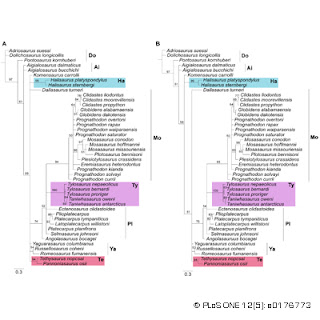Ya se ha abierto la inscripción para el curso Morphological phylogenetics: principles, applications, and techniques. 6ª Edición. Este curso se impartirá en directo online (sincrónico). Máximo 18 participantes.
FECHAS Y HORARIO: sesiones en directo el 23, 25, 27, y 30 de septiembre y el 2, 4, 7, 9, y 11 de octubre, 2024; de 16:00 a 19:30 (zona horaria de Madrid).
RESUMEN DEL CURSO (en inglés, que es el idioma en el que se impartirà el mismo)
An accurate reconstruction of evolutionary relationships among species is the cornerstone of evolutionary biology. Building phylogenetic trees thus provides the fundamental framework upon which systematic, biogeographic and evolutionary research operates. Morphological phylogenetics provides a unique toolkit for inferring relationships, considering that the vast majority of the species that have ever lived are now extinct and can only be assessed based on morphological data.
Additionally, combining fossils and morphological data with molecular data from extant species is becoming the most comprehensive method of assessing phylogenetic relationships on deep time and the time of origin of major evolutionary lineages. In this course, we will focus on the analysis of morphological data (and combining morphological data with molecular data) using multiple optimality criteria for phylogenetic inference.
We will discuss the best available approaches to construct morphological data sets and their impact on phylogenies. We will follow with theory and hands-on practice of phylogenetic programs using maximum parsimony, maximum likelihood and Bayesian inference.
Participants will learn how to combine morphological and molecular data for total evidence analyses, how to conduct time-calibrations using tip and node dating, different birth-death models, morphological clocks and combined evidence relaxed clock analyses. Customized course materials will be provided.
Software: Mesquite, TNT, RAxML, IQTree, Mr. Bayes and BEAST.
Podéis encontrar más información en https://www.transmittingscience.com/courses/evolution/morphological-phylogenetics-principles-applications-techniques/ o escribiendo a courses@transmittingscience.com
Un cordial saludo
Sole


